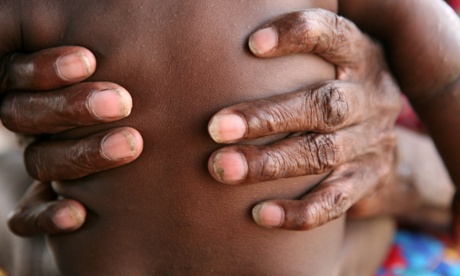COAG reform council chair also warns proposed GP co-payment could lead to worsening health in the Indigenous community

The outgoing chair of the Council of Australian Governments reform council has warned of the loss of an independent voice on Indigenous health and education when the prime minister’s office takes on the task of reporting outcomes from the Closing the Gap campaign.
The council’s last report, a supplement that focuses on health outcomes for Indigenous people, was released on Thursday, with the council chairman, John Brumby, warning the proposed $7 co-payment to see a GP could lead to worsening health in the Indigenous community.
The council is being wound up on 30 June as part of the government’s budget measures and the prime minister’s office will assume responsibility for reporting on Closing the Gap outcomes. Brumby said the council’s reports had kept the government accountable and helped focus efforts in Indigenous education and health, but also showed there was still a long way to go.
“I have a great deal of respect for the Department of the Prime Minister and Cabinet and I’m sure there are people with the skills to do that in PM&C. However, what the COAG reform council did that was particularly special was hold governments to account on the promises they have made, but did so independently of any one government,” he said.
“We report independently on the progress of all nine of Australia’s governments – the commonwealth, the states and the territories – in closing the gap. That independence ensured that our reporting was impartial and objective. Who will do this in the future?”
The report found lung cancer rates among Indigenous people were still twice as high as among the non-Indigenous population; Indigenous people were waiting longer for elective surgery and to get into nursing homes and were drinking much more alcohol in single sessions.
A 10-year gap remains in life expectancy but child mortality and immunisation rates have improved greatly.
Brumby warned the government against budget measures which may hurt the chances of reaching Closing the Gap targets and cause particular suffering among Indigenous people.
“As you know, the cost of healthcare is very topical at the moment. Australians are being asked to consider what they would pay for access to a primary care physician,” he said on Thursday in Melbourne.
According to the council, 12% of Indigenous people already delayed or decided against a visit to a GP because of cost and 34.6% delayed or did not collect prescribed medicine due to cost.
“When people start to avoid going to their primary or community care provider because of cost or other reasons, they often end up in hospital,” Brumby said.
“And what we found was that rates of potentially preventable hospitalisations for Indigenous people were already three to four times higher than rates for other Australians. These results provide context for governments when they are considering policies around access to primary care.”
He added: “Governments should be careful that they do not put up barriers to healthcare access for Indigenous people as it may undo the good work that has been done in this space over five years and end up creating a different burden on the hospital system.”
According to the council’s report, in 2011–13 the Indigenous adult smoking rate was 41.1% while the non-Indigenous rate was 16% and rates for both groups had fallen since 2008.
Of Indigenous five-year-olds, 89.8% are fully immunised, compared with 90.8% of all children. In 2012, Indigenous one-year-olds were behind other one-year-olds in being fully immunised but they caught up from when they were about two years old.
Indigenous people waited an average of 40 days for elective surgery in 2012–13, while other Australians waited an average of 36 days.
The report says 14.2% of Indigenous people waited nine months or more for a nursing home place in 2012-13 while 11.7% of non-Indigenous people waited more than nine months. This was an improvement on 2011-12, when 18% of Indigenous people waited nine months or more.
While there was no significant difference in the risk of long-term harm from alcohol, the report found Indigenous people tended to drink more in a session.
Of people who had drunk alcohol in the past year, 44% of Indigenous men reported drinking 11 or more standard drinks in one session, compared with 33.5% of non-Indigenous men. Of Indigenous women, 30.8% reported they had drunk seven or more standard drinks in a session, compared with 21.0% of non-Indigenous women.
“What we found was that Indigenous people were three times as likely to die of an avoidable cause. This means that three-quarters of deaths of Indigenous people aged under 75 were avoidable either through early prevention or treatment,” Brumby said.
“By way of comparison, two-thirds of all Australians died from avoidable causes. It is a tragedy to think of all of those taken before their time purely because they did not receive care early enough or did not make the lifestyle changes to prevent disease.”
